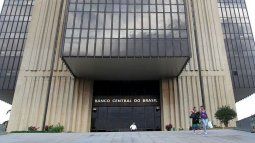This week the inflation data of July in the City of Buenos Aires was disseminated, which accelerated against June. Although the figure ignited alerts, economists highlighted an aspect that they consider encouraging.
The inflation in the Buenos Aires City It accelerated to 2.5% in July, above 2.1% registered in June. However, when the rise breakdown, economists highlighted a fact that could favor moderation in the next measurements. In parallel, The exchange rate showed greater stability during the first week of August, which leads analysts to project that the debate on an eventual “Pass Through” could be postponed for August or September.
The content you want to access is exclusive to subscribers.
The CABA IPC showed a variation of 2.5% in July 2025, above the expected for that month and of what was relieved by private measurements that were between 1.9% and 2.1%. Moreover, the general index accelerated compared to the previous two months and became the largest monthly registry since March 2025 (+3.2%). In this way the accumulated of the first seven months remained in 18.1% (2.4% monthly). The rise was strongly driven by seasonal (They played against winter holidays) and services.


Despite this, analysts rescue that “Core” inflation (the one that helps to understand underlying trend) was moderated with respect to the previous month. “Now, the core component (by far the largest portion of the general index and what should matter most) tells us a different and less volatile story. Without hurry, but without pause, 2% monthly, a monthly variation of 1.9% last month, and maintained the uninflationary trend, “they highlighted from Outlier.
From PPI They also highlighted this data, by maintaining: “July inflation for CABA left a bittersweet taste. LTo general inflation it accelerated up to 2.5% in July From 2.1% in June and 1.6% in May. The positive thing was that the nucleus cut from 2.2% to 1.9%, the lowest pace since the beginning of the series in 2019 by excluding the pandemic “.
Therefore, for the following months, from Outlier they predicted that “since a good part of the Julio Rub of Seasonas had to do with the winter holidays, It is likely that at least one portion of this will be reversed in August and helps to compensate, if there is, acceleration in the inflation of goods as a product of the increase of the dollar on the end of July. This could be a key factor to compensate for the next two months and, in that case, the rise of seasonal ones will cease to be so bad new, “they completed.
What can happen with the dollar and its eventual impact on prices
For Max Capitalhe “Pass-Through” It seems limited at the moment, although they recalled that in 2016-2018 (last period with a nominal anchor) it was from about 10% to the third month and 30% at six monthsso they projected “a similar dynamic” for this period that It would take inflation to about 2.5% in August, with a similar record in September.
For Outlier This discussion will also extend for inflationary data in August and September, although it will depend on what level the dollar ends, because this week there was a setback of $ 40. “It must also be noted that the prices of vaccine meat, product with a demand elasticity of high income, which had already adjusted its price during the first half of the year and that has an elevated weight on the CPI, played in favor during July,” they said.
“With the possibility that August does show some ´Pass-Through´ at prices, we highlight that, for the moment, this would be less than previous episodes of the dollar’s rise highlighting that: (1) The percentage rise was more limited than in other Stress events; (2) The volatility of the dollar also remained less than in those eventsalso considering high volatility in rates in pesos; In SBS group.
National IPC: What left Caba’s data
Regarding the use of CABA inflation as proxy of INDEC inflation from Outlier They have four progressive approaches to project the number:
- The first is to use only the subscripts of goods and services of the CABA IPC and weigh with the Indec methodology for the National CPI, which is the most widespread calculation. That indicator yields a monthly inflation proxy of 1.9% monthly.
-
The second alternative is to weigh with the Indec Methodology the indices of the different items of the CABA CABA, disaggregating the items That procedure throws an average monthly variation of 2.2%.
-
The third alternative incorporates, in addition to the difference in weighters, the difference in the values of the indices and is obtained by applying to the Indec indices the monthly variations of the CABA indices, It shows a monthly proxy variation for INDEC of, also, 2.2%.
- The fourth option takes into account that there are five items that inward have significant weighting differences in goods or services that had outstanding variations. Correcting for these issues an estimate of 2.1% monthly is obtained.
Source: Ambito




